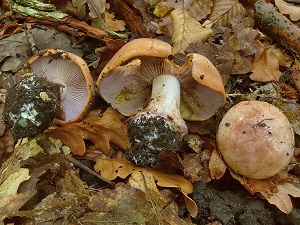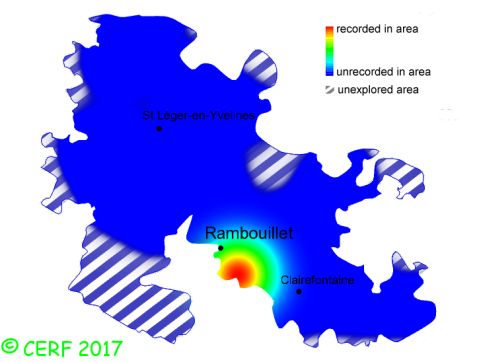| Cortinarius dibaphus Fr. |
|
|
|
|
|
|
The cap is lilac-blue to violet-blue or pinkish, hygrophanous, drying to ochre, convex then expanded; its margin is smooth. The cap surface is smooth, viscid-sticky, looking matt rather quickly when drying. The stem is blue-violet to ochre, with a well defined marginate (or not) bulbous base, with a cortina. The flesh is whitish, blueish in the stem, saffron in the stem base, unchanging; its taste is clearly bitter; the odour is faint; its texture is fibrous. The gills are grey with violet shades, then pale ochre with a lilac edge, then eventually rusty brown, crowded . The spore print is rusty brown. This species is mycorrhizal. It grows on the ground, in coniferous woods, also in mixed or broad-leaved woods, on a rather calcareous soil, with fir, but also beech and oak. The fruiting period takes place from September to October.
Chemical tests : reaction to potash: cap surface becoming pale pink; flesh becoming red to bright pink. Distinctive features : Violet to lilac cap, discolouring to ochraceous, with a sticky surface; stem violet to ochre, with a bulbous base; pale-ochre gills, with a violet edge, later becoming rusty-brown; bitter flesh, blueish in stem; reddish-pink reaction to potash; with fir, beech, oak on calcareous soils Cortinarius dibaphus is rare and confined in the forest of Rambouillet, and is occasional, more generally speaking . | ||
|
page updated on 14/01/18

